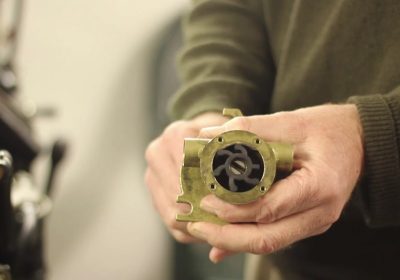Cold Weather Sailing Tips…
We sail the Solent all year round and over the years have developed strategies to ensure cold weather sailing is thoroughly worthwhile. This article is about preparing yourself, crew and boat for winter sailing in sheltered waters.
Extending the season to include the shorter, colder days makes a lot of sense if the experience can be made agreeable. It does require some planning and expense but the rewards are huge. Sparkling winter days on empty seas can be the best of all sailing. No crowds, no plonkers – just you and your crew on a well found, snug vessel – the stuff of dreams.
Timing is everything. Be prepared to be opportunistic and grab the good days when they come and cancel when the forecast turns grotty. Be prudent about finishing times. Once the sun dips below the horizon the temperature will plummet so plan short, sharp days out and aim to be back alongside just as the sun disappears. Trust me – you can grab another hour or two at the end of the day but it is never worth it.
The first job of the day is to do the engine a big favour by switching on the calorifier (domestic hot water tank). The water in the calorifier is ordinarily heated by the engine, which is fine as far as it goes but when starting a stone-cold diesel it has to warm itself and the tank of cold water – which is not a good thing because cold running diesels are unhappy and potentially short-lived diesels. Heat the tank first using the mains electricity supply and when the engine is started it is warmed by the now-hot water in the tank. Identify the engine plumbing and feel the pipes as the engine warms up to see what I mean. On the subject of cold starts try to start the engine at tick-over – resist the temptation to rev the engine as soon as it fires. Let it warm up at around 1000rpm once it has oil pressure.
The spray hood can take a beating in cold weather. The spray hood should come down, even when cold weather sailing so everyone, irrespective of stature can see where they are going. The plastic see-through panels become stiff in the cold and can crack when the hood is folded. The solution is to carefully pour a kettle of hot water over the windows which become supple when warmed and fold down the hood before it cools off.
Ice on the deck is an obvious hazard. Wash it down with salt water. Slosh it everywhere including places you don’t expect anyone to go. In the winter a man overboard situation on a typically short-handed family yacht is unlikely to end well.
Down below warmth overnight is pretty much essential if you want your crew to repeat their winter sailing experience. Blown hot air heaters (Eberspacher – Mikuni etc) are effective but noisy – you might be warm but you won’t be asleep. The same applies to mains powered fan heaters. Oil filled radiators however are a gift from the gods to winter sailors. Replace the little caster wheels with rubber door stops from a hardware store so it doesn’t wander around in the night as the boat rocks – and life will be toasty. Position it where you can reach the controls from your bunk for the last word in winter sailing bliss.
If you do have a blown hot air heater leave it running when sailing. It makes a boat so much more homely and welcoming, especially to newcomers. Crew can rotate below for a warm up and, usefully will be easily talked into tea-making. If running the heater all day at sea is too much for your batteries then you need new, or more, batteries.
Knowing what to wear comes with practice. Layers are essential but they don’t have to be trendy brand-name kit. A scarf around the neck and crossed over the chest underneath all clothing is just fabulous and keeps the front of the neck warm. You do have to nearly undress to put it on properly but it is so worth the effort. Hats – we have many hats… Nothing beats a good woolly hat. Fur ‘trapper’ hats should be great but don’t always deliver. Stick a balaclava in your kit bag – the day will come when looking like a terrorist is better than not being able to feel your face. Good boots are essential and are probably the one item that is worth going financially overboard on, so to speak. Get them big enough to accommodate thick socks, really thick socks.
Passage planning priorities change in the winter. Remember rain is far worse than cold in terms of morale. Beating can be miserable because of the higher wind speed and potential for splash over the bow. Going to windward might also mean repeated sheet handling which means cold wet hands. There is no shame in shaping a reaching course purely predicated on comfort. Ditto motor sailing, God gave yachties the diesel engine for a reason, pootling smartly home on a crisp winter afternoon assisted by the donk means charged batteries, hot water and a palpable sense of progress.
Above all be very conservative in your planning until you have the measure of winter sailing. If you put your least-hardy crew members’ needs first you are likely to deliver an agreeable day’s entertainment to all aboard – they might even come again.
PS – We have just discovered Decathlon – great value-for-money sports kit. We were particularly taken by their layers and basic sailing clobber. They are online and have a huge store at West Quay in Southampton – within walking distance of our berth at Southampton Town Quay. We have no tie-up with them – just happy customers. Ideal for anyone just dipping their toe in the water…



